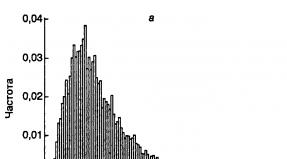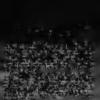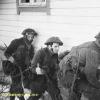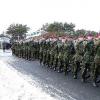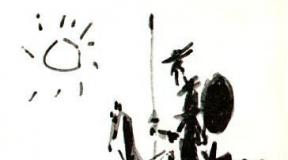Aperture is better larger or smaller. F-number
A simple definition of photography is painting with light.
When you paint with light, you create a story in a split second. That's what all the photos are about. Technically, your camera measures the amount of light in a scene, and you tell it how much of that light you want to use to create an image with the correct exposure. It becomes your story.
There are three main settings for controlling light; shutter speed, ISO and, my favorite, aperture. Each of these installations has its own individual way of measuring the amount of light. When all three are properly balanced, you are creating the right exposure.
While each of these settings measures the amount of light, they also have distinctive characteristics that add artistic flair to your shots. By understanding them, you are in control of the entire story you want to tell.
Shutter speed captures the movement or "freezes" it. ISO helps control how sensitive your camera is to the light in the scene. Finally, the aperture creates depth of field. This is where the story comes in; it is with the aperture that you control what is in focus and what is not.
As a photographer, how do you decide where to focus your viewer's attention? How do you create your story? That's what aperture is and why I love it.
Where is she and what is she doing?
The aperture is in your lens, not in the camera body. The lens opening opens and closes to control the amount of light. By choosing a certain aperture value, you tell the lens how much light should hit the matrix.
This is very similar to how the human eye works. Your pupils dilate and contract according to how much light is in the scene. For example, when you enter a dark movie theater. You don't see anything at first, but then your eyes adjust. The pupils dilate, allowing you to see as much light as possible in a dark room.
Again, when you are outdoors on a sunny day, the light is too bright at first. Your pupils constrict, letting in less light. The lens diaphragm works on the same principle. Changing the aperture value is the constriction or dilation of the pupil.
The aperture size of a lens is measured in so-called f-stops (f-number). Like the rest of the camera settings, it has a common range.

Memorizing numbers is optional. It is important to see the range in the settings. There is a trick here; the lower the f-number (for example, f / 1.8), the more the aperture opens. This means more light will enter the lens opening and vice versa. The larger the aperture value (such as f / 22), the smaller the aperture will open and less light will enter the lens.
Take the f-number as a fraction. Just replace F with number one. 1/4 of a pie is much more than 1/16 of a pie.
As a side note, not all lenses are created equal. Different lenses have different apertures. Some have a wider range, some less. Standard lenses have an f / 3.5 – f / 22 range. Special ones can go down to f / 1.2 and below.
Depth of field vision.
This is where the fun begins. When measuring the amount of light as the lens opening widens and contracts, the depth of field is also measured. Again, your eyes are doing the same!
When you look at the monitor and read this article, all the words are mostly in focus for your eyes. With your peripheral vision, you can also see other objects, but they will be out of focus.
Notice your hands on the keyboard, in the foreground, and possibly a bookshelf in the background. You can see them, but they are out of focus. You can see the depth of field.
Good photography does just that. It captures foreground, middle and background. By setting the aperture, you control which of these areas will be in focus. It all depends on your intention, on your story.
Determination of the depth of field.
With the focus point (that little square in the middle of the viewfinder), you focus on a specific part of the scene. This point will be the clearest in your image. The area in front of and behind this focus point will also be in focus. The distance between the foremost and rearmost points that are in focus is considered to be depth of field. You decide what it will be by choosing a certain aperture size.

This is a story about a monkey on a rock. The bushes in the foreground and the temple on the rock in the background were out of focus. They are out of depth of field. This will draw your attention to the focal point - the monkey in the middle.
Remember, the smaller the f-number, the larger the opening, the more light enters the lens. This means that a smaller area of \u200b\u200byour scene will be in focus and you will have a shallow depth of field. The opposite is also true. Larger f-number, smaller opening, less light enters the lens. In this case, almost the entire scene will be in focus, and you will get a great depth of field.
Simply put, the larger the f-number, the larger the area will be in focus. The lower the f-number, the smaller the area in focus.
The depth of field is more detailed.
When you set a focus point on a specific area, that location creates a focal plane. Anything at the same distance from the lens is in the same focal plane and will be in focus.
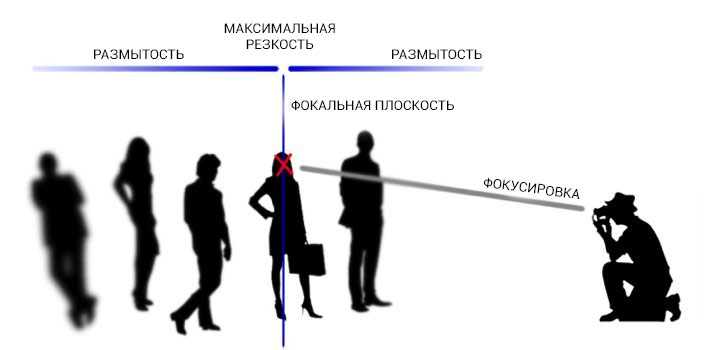
With a shallow depth of field (low number), the focal plane is very shallow. If the depth of field is deeper (large number), the focal plane becomes larger.
Here is the same scene, photographed with different aperture settings. Note that the depth of field affects how much of the image remains in focus.

At f / 2.2 only sunglasses are in focus. At f / 5.6, the hat is also in focus. Using f / 8.0 you can see the trees in the background. Finally, at f / 22, the entire image is in focus.
Which one will tell the best story? It's up to you as a photographer.

Now that you have a grasp of the basics, it's time to have some fun! Here are some tips to get you started.
Set your camera to Aperture Priority mode. You have complete control over your aperture without worrying about proper exposure. This way you can just focus on the depth of field. This is a great way to understand what your lens is doing when you change your aperture settings.
Select a subject or scene. Take pictures of her from different angles. Choose different areas to focus using the full range of aperture settings.
Use these tips for how to use depth of field in different scenarios:

When photographing a single subject, such as a portrait of a child, it is best to use a smaller aperture value, such as f / 1.2-f / 2.8. Creating a shallow depth of field draws attention to the face, which is always the most important in a portrait;
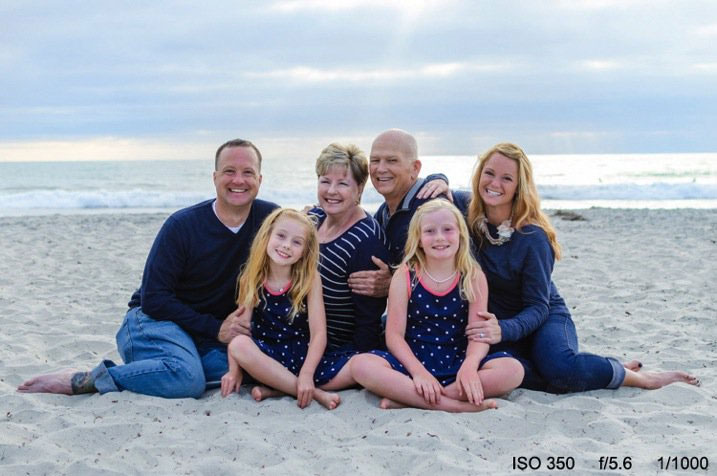
When shooting a small group of people (2-5 people), set it to f / 4-f / 8. This depth of field is slightly deeper, and this ensures that all people are in focus;
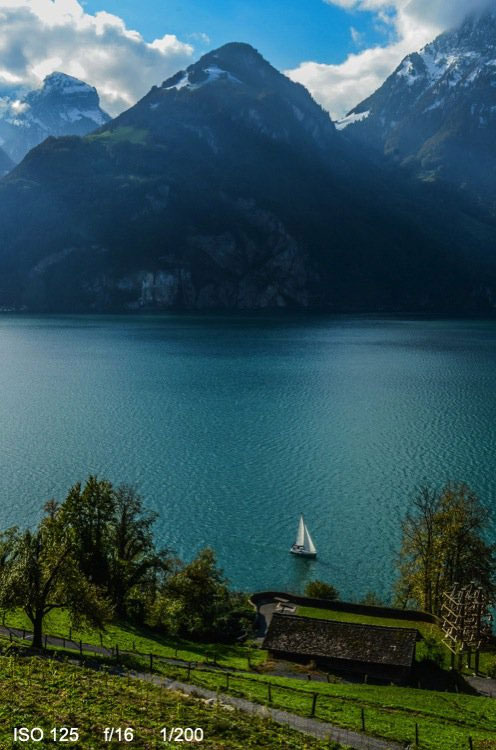
Whenever you have an open scene, like a landscape, and want to show everything in focus, choose a number higher than f / 10.
These are just tips. Photography is an art form. Be creative and remember that this is all about telling a story.

What are these strange f-number? 1.4, 2, 2.8, 4, 5.6, 8, 11 Why not use whole numbers for apertures? For example, 1, 2, 3, 4, 5 Today we will finally deal with these strange numbers, finding out their origin.
So where did these numbers come from?
First, let's find out what the diaphragm itself is. An aperture is a device that allows you to change the amount of light passing through the lens and the depth of field.
F-number is the ratio of the lens focal length to the aperture diameter... The f-number is recorded in this way f / x (focal length divided by some number).
A number of f-numbers are linked to exposure steps. One level of exposure equal to the change in illumination twice... Accordingly, a change by one f-number as in the illustration at the beginning of the article is equal to a change in illumination by one exposure stop.
For brevity, the exposure level in the English manner is sometimes called even in Russia stop ("One stop" or f-stop).
The more the aperture is open, the lower the f-number.
In order for twice as much light to pass through the lens (or, in other words, one step more), it is necessary to double the aperture area. Consider the illustration below.
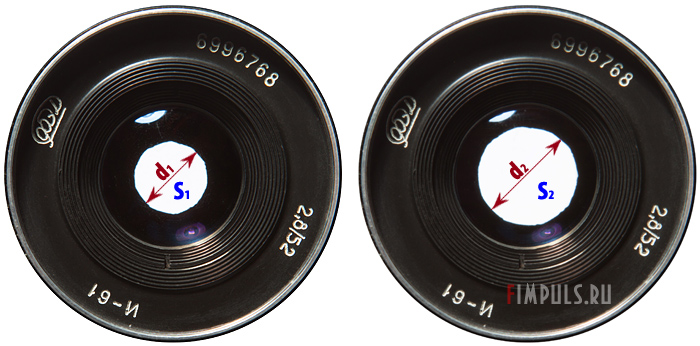
In the first case, light passes through a hole with an area S 1 with diameter d 1, and in the second case the hole area S 2 twice as much
How much will the hole diameter increase? d 2? Also doubled? Not. Let's remember the formula for calculating the area of \u200b\u200ba circle.

Replace the hole areas in our first equation with diameters. And let's find the relationship between d 2 and d 1.

Let's take the root of 2 and get an approximate formula.
![]()
In other words, if the area of \u200b\u200bthe circle has doubled, then its diameter has increased by 1.4 times.
Now let's compose a sequence of hole diameters so that each subsequent hole has an area twice as small. In other words, the amount of light through each subsequent hole should decrease by one step. Let's start with one.
1
x 1.4 \u003d 1.4
1.4 x 1.4 \u003d 2
2 x 1.4 \u003d 2.8
2.8 x 1.4 \u003d 4
4 x 1.4 \u003d 5.6
5.6 x1.4 \u003d 8
81.4 = 11
etc.
Doesn't it look like anything? Now, I hope, it is clear where such strange numbers of a number of diaphragms come from?
This row is called the main... In this series change by one number leads to change the amount of light by one step... There are other aperture numbers on your camera that are not included in the main series. What are these numbers and why are they needed?
Aperture numbers other than the base number are intermediate values \u200b\u200bbetween the base numbers. The more intermediate values, the more accurate the exposure can be. Accuracy is usually sufficient even when dividing the gap between the main numbers into three parts. For example, between the diaphragm 5.6 and diaphragm 8 , you will find more aperture numbers 6.3 and 7.1 .
5.6
+ 1/3
exposure steps \u003d 6.3
5.6
+ 2/3
exposure steps \u003d 7.1
5.6
+ 3/3
exposure steps \u003d 8
or
6.3
+ 1/3
exposure steps \u003d 8
or
8
2/3
exposure steps \u003d 6.3
etc.
Thus, a number of diaphragms with a step 1/3 steps will look like this (numbers of the main row are highlighted in red).
…1 , 1.1, 1,2, 1.4 , 1.6, 1.8, 2.0 , 2.2, 2.5, 2.8 , 3.2, 3.5, 4 , 4.5, 5.0, 5.6 , 6.3, 7.1, 8 , 9, 10, 11 , 13, 14, 16 , 18, 20, 22 , 25, 29, 32 …
In the settings of your camera, another step for changing apertures can be selected. 1/2 exposure steps Then the row of diaphragms will look like this.
1.4 , 1.8, 2.0 , 2.5, 2.8 , 3.5, 4.0 , 4.5, 5.6 , 6.7, 8.0 , 9.5, 11 , 13, 16 , 19, 22 , 27, 32 , 38
Do not be surprised that in the first and second cases you sometimes see the same numbers in the intermediate row. For example, at step 1/3 and at step 1/2 you are watching the number 2,5 and 13 ... This is due to inaccurate calculations. But in practical photography, this can be neglected.
Can the aperture be less than one? Yes maybe. This means that the focal length is less than the diameter of the aperture opening.
The minimum aperture value is indicated directly on the lens. For example, the numbers in the lens marking Canon EOS 50 / 1.4USM stand for focal length 50 mm, the minimum f-number is 1.4 .
If you have a variable focal length lens (zoom lens), then you can see two apertures. For example, CanonEOS 70-300 / 4-5.6 USM... Here the manufacturer informs you that at the focal length 70 mm the minimum f-number will be 4 , and at focal length 300 mm – 5.6 ... These numbers do not have to match the standard values.
It is not customary to specify the maximum f-number.
Why has aperture value caught on among photographers?
Because of its convenience. Consider two lenses with different focal lengths - 50 mm and 100 mm... For lens 50 mm diaphragm f / 2 will mean that its hole is open for 25 mm, and for the lens 100 mm diaphragm f / 2 will mean that the diaphragm is open to 50 mm. But in both cases, the amount of light falling on the matrix will be the same... Therefore, we do not need to memorize the diameters in millimeters of each particular lens. It is enough to memorize a number of diaphragms.
The more you practice shooting, the faster you memorize a series of f-numbers. For a faster memorization of the main series of aperture numbers, you can use the following technique. We divide the entire row into two parts.
First part: 1
, 2
, 4
, 8
, 16
, 32
and so on. Each subsequent number is simply multiplied by 2
.
Second part: 1.4
, 2.8
, 5.6
, 11
, 22
Each subsequent number is multiplied in the same way by 2
.
So you will remember the whole row at once.
In the next article, we will continue to analyze the concept exposure stage.
Good luck in your work and creativity!
F-number
Aperture number - the value of the denominator of the current relative aperture of the lens.
Determined by the ratio of the entrance pupil to the back focal length f "/ D.
The higher the aperture number, the narrower the relative aperture, and the less light falls on the film or the matrix of a digital camera. When the aperture is changed by the square root of 2, the illumination of the frame is halved. For example:
Aperture F / 1.4 (≈ root of 2).
Squaring we get 2.
Cube we get ≈2.8.
Raising to the 4th power we get 4.
Raising to the 5th power we get ≈5.6.
Raising to the 6th power we get 8.
Camera lenses are gradated with aperture scales in such a way that when moving to an adjacent scale value, the illumination of the frame changes twice. Aperture scales: 1; 1.4; 2; 2.8; 4; 5.6; 8; eleven; 16, etc. There is considerable convenience in such labeling. When switching from aperture 5.6 to aperture 8, we get exactly half the light and, accordingly, to obtain the same exposure, we increase the shutter speed by half.
Literature
- Kulagin S.V., Aparin E.M. Design of photographic and cinematographic devices. Moscow: Mechanical Engineering, 1986.
Wikimedia Foundation. 2010.
See what "F-number" is in other dictionaries:
f-number - (K) The reciprocal of the relative aperture. [GOST 7427 76] f-number According to GOST 7427 76. Note The nominal f-number of a photographic lens is a geometric progression with the denominator 2 ... Technical translator's guide
F-number (f-number) - A value showing the ratio of the focal length to the maximum aperture diameter. The f-number scale has divisions of 1.0 / 1.4 / 2 / 2.8 / 4 / 5.6, etc., with a step of 1.4. Increasing the diaphragm diameter (and the amount of ... Glossary of Samsung Home and Computer Terms
Light number, conditional number, uniquely expressing ext. conditions during photography (usually the brightness of the subject and the photosensitivity of the used photographic material). Any value of E. h. Can be selected several. combinations f-number ... ... Big Encyclopedic Polytechnic Dictionary
Depth of Field In photography, depth of field (DOF) is one of the characteristics of a lens. Depth of field in a photographic image is the distance between front and back ... ... Wikipedia
Lens aperture is a value that characterizes the degree of attenuation of the luminous flux by the lens. Sometimes the aperture ratio is incorrectly called the denominator of the relative aperture (f-number), since the aperture ratio is a characteristic ... ... Wikipedia
F-number - the relative size of the lens aperture, expressed in reciprocal units. It determines the intensity of the light falling on the light-sensitive element.
The f-number is the ratio of the focal length of the lens to the size of the aperture opening. Since the parameter expresses the linear size of the hole, the amount of light passing through it has an inverse-square relationship (and not inverse).
The f-number is usually referred to as F / x or F: x, where x is its numerical value, so, for example, F / 2.8 means an f-number of 2.8. There is a standard range of aperture numbers: F / 1.0, F / 1.4, F / 2.0, F / 2.8, F / 4.0, F / 5.6, F / 8.0, F / 11, F / 16, F / 22, F / 32, in which each step differs from the previous one by 1.4 (more precisely) times, which gives a 2 times difference in the intensity of the transmitted light.
Using APEX (additive system for photographic exposure) The f-number is indicated in logarithmic units, and is called the aperture value in order to avoid confusion with the usual notation. The f-number is defined as 2 to the power, half the aperture value:
A = 2 Av/2 ,where A - f-number, Av - the size of the aperture. Example: Aperture value of 7 is F / 11, since 2 7/2 ≈ 11. Whole shutter speeds correspond to a standard range of f-numbers.
Together with endurance , the diaphragm defines exposition ... Thus, adjusting the aperture makes it possible to shoot in different lighting conditions.
The f-number also depends on depth of field , the larger the diaphragm, the greater the depth. This allows the aperture to be used to create an artistic effect. If it is necessary to shoot a multi-faceted scene (landscape for example), a large aperture value is selected, which sharpens the entire scene. When shooting an object against the background, usually take a smaller aperture value, as a result, the background is slightly blurred, which provides the effect of depth.
